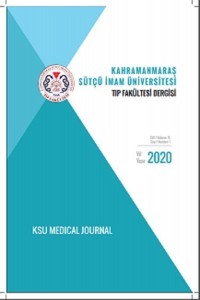The Comparison of the Effects of the Cilostazol on the Stiffness Parameters in Different Arterial Systems in the Patients with Peripheral Arterial Disease
Peripheral arterial disease, stiffness, Cilostazol
___
- Robless P, Mikhailidis DP, Stansby GP. Cilostazol
- ISSN: 1303-6610
- Yayın Aralığı: Yılda 3 Sayı
- Başlangıç: 2004
- Yayıncı: Kahramanmaraş Sütçü İmam Üniversitesi
Travmatik Sternum Fraktürleri ve Tedavisinde Deneyimlerimiz
Anonişi ile Seyreden Bir Liken Planus Olgusu
İsmet SEVİMLİ, Perihan ÖZTÜRK, Mehmet Kamil MÜLAYİM
Kahverengi Köpek Kenelerinin (Rhipicephalus sanguineus) Taksonomik Özelliklerinin Araştırılması
Ekrem KİREÇCİ, Metin Tansu UĞUZ
TRAVMATİK ASFİKSLİ (PERTHES SENDROMU) HASTADA ANESTEZİ YÖNETİMİ
Bora Bilal, Nezir Yılmaz, Mahmut Arslan, Aykut Urfalıoğlu, Gökçe GİŞİ, Hüseyin YILDIZ, Hafize Öksüz, Selma Urfalıoğlu
Neuromyelitis Optica and Neuromyelitis Optica Spectrum Disorders : Report of Nine Cases
Fatma KURTULUŞ, Aylin YAMAN, Burcu YÜKSEL, Yasemin BİÇER GÖMCELİ
Hemanjiyoperisitomlu Bir Olguda PET BT Bulguları
Murat BAYKARA, Halit VİCDAN, Gün KARA
Murat BAYKARA, Özlem GÜNDOĞDU SEÇEN
Kırmızı ve Beyaz Gözlü Şantlar: Dural Karotikokavernöz Sinüs Olguları
Fatma KURTULUŞ, Aylin YAMAN, Mustafa ÇETİN, Mehmet BULUT, Nesrin ERKEK, Hamide MANSUROĞLU
